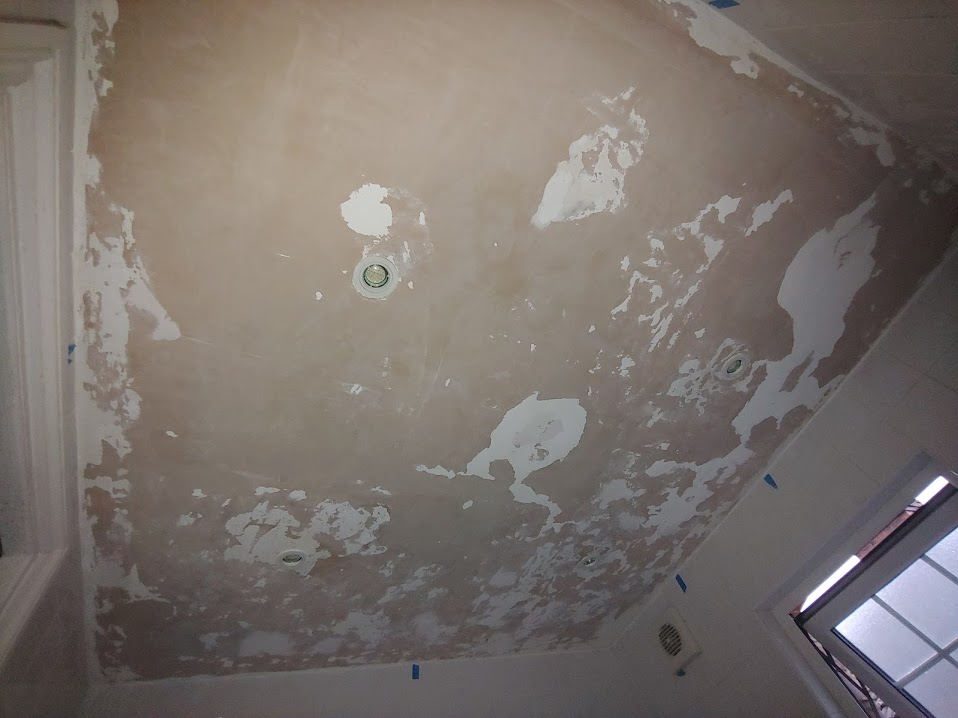- Joined
- 4 Aug 2020
- Messages
- 20
- Reaction score
- 2
- Country

Hi there!
I've recently managed to strip the majority of paint from a flaking and peeling bathroom ceiling that contained 2-3 paint layers in some areas. After stripping away the paint, I can see that the previous ‘painter’ painted over mould in some areas, however filler was added in areas to ensure that the ceiling was smooth.
As you can see, I’ve managed to scrape off most of the paint back, which I understand was a mistake.

My process
I’ll look into upgrading the extractor fan and I’m now opening the bathroom window regularly after each shower, to alleviate moisture build up, which should reduce condensation and mould build up in the future.
Many thanks.
I've recently managed to strip the majority of paint from a flaking and peeling bathroom ceiling that contained 2-3 paint layers in some areas. After stripping away the paint, I can see that the previous ‘painter’ painted over mould in some areas, however filler was added in areas to ensure that the ceiling was smooth.
As you can see, I’ve managed to scrape off most of the paint back, which I understand was a mistake.

My process
- Washed the walls down with HG Mould Spray and rinsed with cold water. This was around 2 months ago.
- Scraped the loose bits of paint, until I could scrape no more.
- Sanded the entire area with 120 grit sandpaper using a sand pole.
- Vacuumed and wiped away the remaining dust.
- Cracks in the plaster are ‘primed with a 1:4 of PVA/ Water mix.
- Wait until dry.
- Apply a thin coat of joint/ compound Toupret TX110 to the cracks in the plaster
- Wait until dry
- Add another thin layer of joint/ compound, so the repaired area is practically level with the surrounding area.
- Wait until dry
- Sand the entire ceiling with a light sand with 120 grit sandpaper.
- Prime the whole ceiling with with Zinsser Bulls Eye 123 sealer primer.
- Apply 2 coats of Dulux Bathroom Easy Care Bathroom , using a roller with a microfibre medium nap.
- Is my approach suitable?
I’ve been made well aware that painting is effectively 80% preparation and 20% painting. I really want to get this right the first time. FWIW, I’ve never painted a wall or ceiling in my life.
- What’s the best option for applying the Zinsser Bulls Eye 123?
I’ve got a couple of 4 inch foam rollers, a 4” microfibre sleeve with a short nap and two 9” microfibre sleeves with a medium nap and a couple of high quality brushes. I’ve heard that brushes and sleeves are potentially a one time deal with this primer.
- Do I need to water down the Zinsser 123, to ensure that it's absorbed by the plaster/ substrate?
I'm assuming that I don't need to do this, as this only applies to new plaster, but just want to be sure.
I’ll look into upgrading the extractor fan and I’m now opening the bathroom window regularly after each shower, to alleviate moisture build up, which should reduce condensation and mould build up in the future.
Many thanks.
Last edited:





